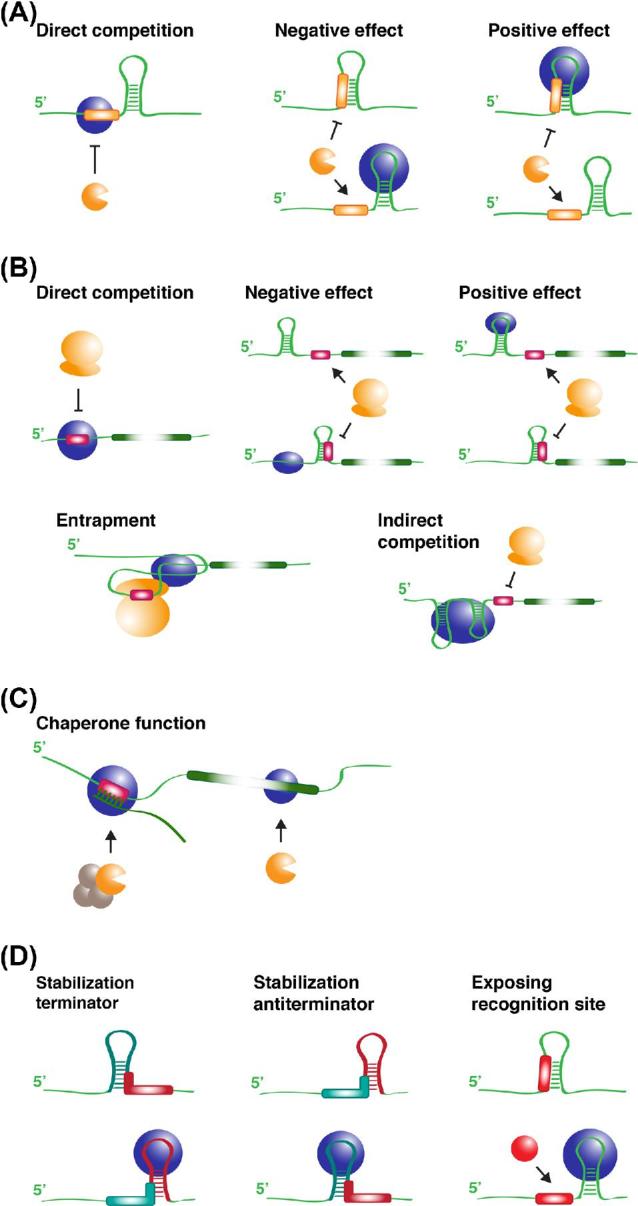Figure 6.

Regulation of mRNA stability and regulation of bacterial translation and transcription with RNA-binding proteins (RBP). (A) Regulated access to ribonucleases. A RBP (blue colored) may directly compete with the binding of a nuclease (yellow colored) to an overlapping site on the mRNA, liberate a recognition site for a ribonuclease on the mRNA resulting in a negative effect on gene expression or favor the formation of a secondary structure in which the target site (yellow colored box) for the ribonuclease is not readily accessible. The latter results in a positive effect on gene expression. (B) Regulated translation initiation. A RBP may (i) directly compete with the ribosome (30S subunit) for binding to the RBS (magenta box), (ii) favor the formation of structure in which the RBS is trapped in a double-stranded secondary structure, (iii) favor the formation of a secondary structure that liberates the RBS, hence facilitating ribosome binding and stimulating translation, (iv) inhibit translation initiation by stabilizing a complex in which the 30S subunit of the ribosome is trapped in an incompetent state by the RNA and (v) indirectly inhibit translation initiation by generating a steric clash with ribosome binding to the RBS. Green colored rectangles represent ORFs. (C) Improved access to proteases by the chaperone function of the RBP that may act in conjunction with a small regulatory RNA (green line) complementary to the mRNA. (D) Transcriptional attenuation. A RBP may positively or negatively affect premature transcription termination by stabilizing a terminator structure (dark red colored hairpin), or, inversely, by stabilizing an anti-terminator structure (sea-green colored hairpin), or still by exposing a recognition site for a transcription terminator protein such as Rho (bright red colored) (or alternatively a target site for a ribonuclease).
